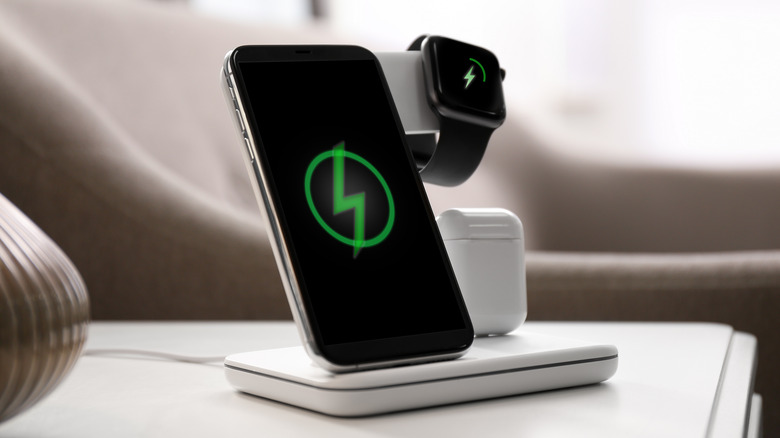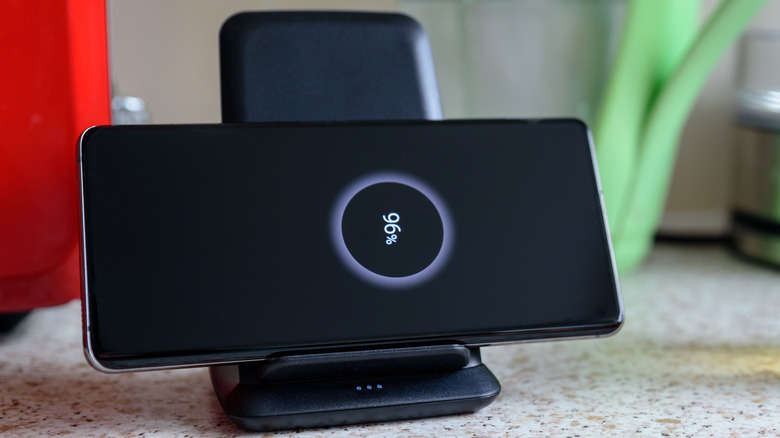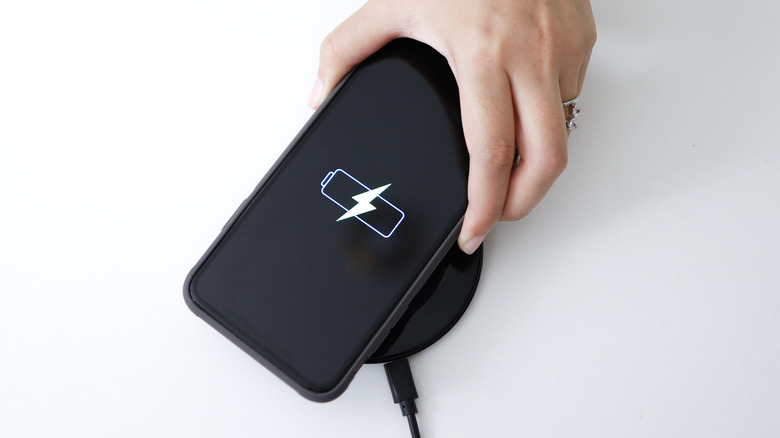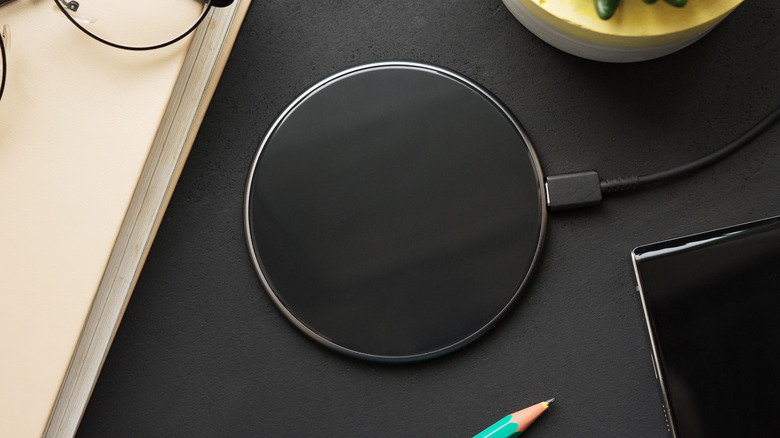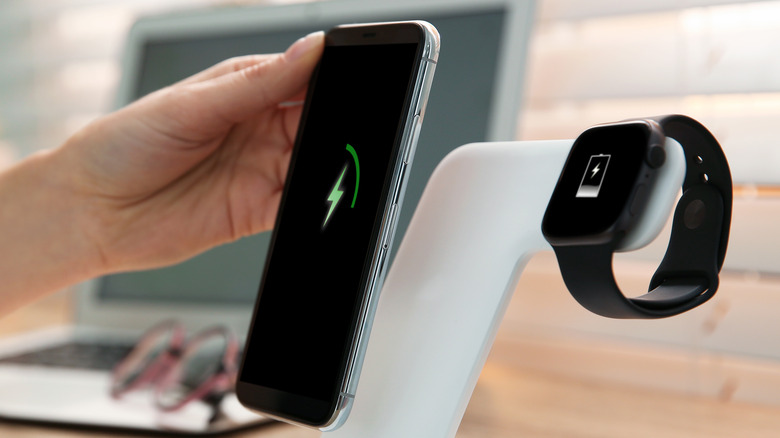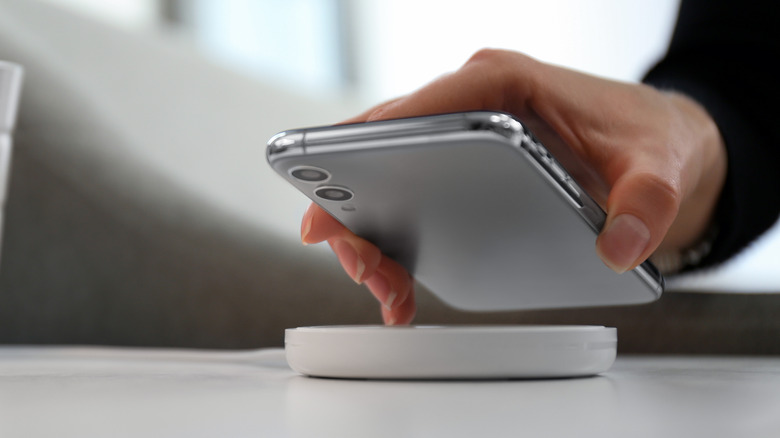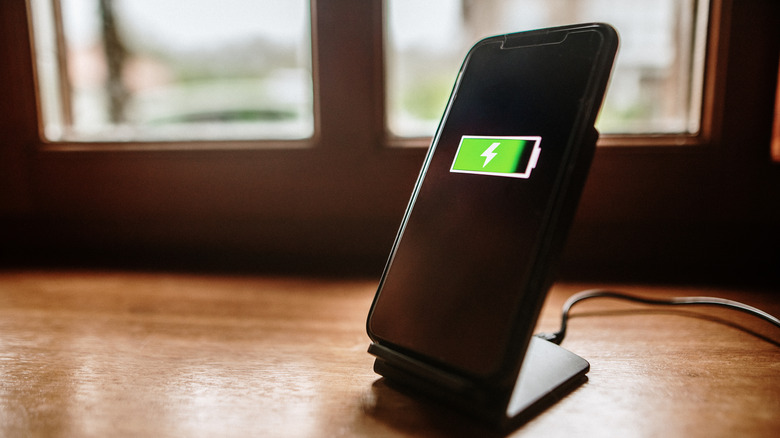Pros And Cons Of Wireless Charging: Should You Ditch The Plug?
Wireless charging is one of the most convenient innovations ever to grace the mobile industry. Yes, it's not as ubiquitous as high-resolution screens or cameras, nor does it come cheap. But if you can afford it, wireless charging can make a difference in your day-to-day smartphone routine.
But there are questions like every outlier technology that is yet to become mainstream. In the case of wireless technology, the most common query is whether it's safe. Simply put, wireless charging is safe. As long as you stick with certified products, neither the charging gear poses any harm nor will it break things inside your phone.
The only problem with wireless charging is that the segment is fragmented. That means certain brands lock the best wireless charging to their proprietary products. Otherwise, in the smartphone segment, it's mostly a smooth sailing journey without any serious hazards. So, if you're pondering whether it's safe to ditch the cord in favor of wireless charging, you can safely side with the latter.
Convenience
Of course, one of the biggest benefits of wireless charging is that it saves you the hassle of carrying cables and bulky adapters. In fact, it acts as a hardware unification platform. Up until the iPhone 14 series, Apple kept wired charging locked to a Lightning cable, while Android phones that support ultra-fast wired charging need special cables that can transmit a stronger stream of electric current.
But when it comes to wireless charging, almost every brand is on the same page. That unifying standard is Qi wireless charging. Irrespective of the smartphone brand in your hand, as long it has a wireless charging coil inside, and you put it on a wireless charging mat, you can juice up the battery without any compatibility headaches.
Almost every major brand, from Apple and Samsung to smaller players like OnePlus, offers support for Qi wireless charging. It ultimately boils down to your brand preference for the charging kit and its versatility in terms of design. You can also put smartphones in the list of accessories. A healthy number of premium phones, such as the Samsung Galaxy S23 Ultra, allow reverse wireless charging. You can put another phone or an accessory like wireless earbuds (with the case) on the rear shell, and the Samsung flagship will juice it up via wireless power transfer.
Versatile form factors
When wireless charging first went mainstream, the charging mats were thick and bulky. That's no longer the case, as significant refinements have been made over the years. For example, Apple's MagSafe Duo charger which neatly folds into a small deck that can be easily slotted into a bag's side pocket. Interestingly, it has two charging rings, one for the iPhone and the other for an Apple Watch.
Stuffcool takes Apple's formula but goes a step ahead by further miniaturizing the design and offering three charging coils on the same kit. The company has even launched a 30W charging adapter with two separate charging pads, one at the top and the other standing at an angle.
Samsung and Stuffcool also offer power banks with charging pads on the top for smartphones and other compatible gadgets. A bunch of accessory makers also offer wireless charging kits that look like decorative stands and accommodate up to three devices at once. Some even make charging pads inspired by pop culture themes. Overall, you won't be limited by form factor, which is a huge win from a versatility perspective.
Less wear and tear
Smartphones have come a long way in offering dust and water resistance, but they are not impervious. It's not uncommon to see port damage, which could result from particle accumulation or poor plugging-unplugging habits. Mechanical damage and long-term usage can also make the USB-C port loose, which can obstruct charging, file transfer, and even system diagnosis for repairs.
Then we have the problem of damage to the wires. It comes as a surprise that Apple, the world's most popular consumer electronics brand, also supplies cables that are notoriously prone to fraying. Wireless chargers pose none of the aforementioned risks. Since they rely on a contact method where you simply put a phone over a charging mat, there is little possibility of dust or water getting inside ports.
Second, the whole process doesn't lead to any mechanical wear and tear over time. Finally, wireless chargers usually sit on a stand or desk and don't need to be carried around like a wired charging kit, so the chances of mechanical damage or misplacing them are minimal.
Speed
It's obvious that wireless chargers are nowhere near as fast as wired charging tools. A few exceptions can be made here, but we are generally looking at a huge charging speed gulf. Take, for example, the Samsung Galaxy S23 Ultra, which can go up to 45W when plugged into a compatible charging brick. Wireless charging is capped at 15W only, and reverse wireless charging is even slower.
The gap becomes even more apparent for Chinese brands. For example, the OnePlus 11 supports 100W wired charging, but the company's best attempt at wireless charging maxed out at 50W. Surprisingly, that's still nearly double that of what Apple allows in wired charging mode and thrice as quick in wireless mode.
Despite being one of the biggest players in the market, Apple is again notoriously laggard. The latest from the company in the iPhone 15 still limits users to just 15W wireless charging speed, but that's only if you're using a MagSafe puck. If you have a Qi-certified charger, the pace falls further down to just 7.5W output.
Cost compatibility conundrum
Its wireless counterpart is still quite expensive compared to wired charging despite the dramatically slower speeds. The asking price further shoots up as you choose more versatility and multi-device charging capabilities. On top of that, most brands limit the best wireless charging facility to their own pricey accessories.
For example, Apple keeps 15W wireless charging locked to MagSafe accessories but limits Qi charging mats from other brands to half that output. The OnePlus also mandates its charging stand to take advantage of the 50W wireless charging perk.
Then there's the question of phones themselves, as wireless charging — especially the fast kind — is usually reserved for high-end phones that cost quite a penny. The choice of material hinders brands, as metal backs are no longer an option if they seek to allow wireless charging.
That leaves them with either plastic-based materials (which often draws the ire of buyers) or spending money on strengthened glass that raises the production cost of phones that ultimately gets passed on to the average smartphone shopper.
A few important tips
If you've made up your mind to embrace wireless charging, there are a few aspects worth keeping in mind. First of all, make sure to grab a Qi-certified pad because they work best with most phones and tablets. Double-check that the charger you're eyeing is actually made for your phone model. An exception can be made for proprietary tech like MagSafe, but for the most part, Qi is the way to go.
Another aspect you should not overlook is checking whether the charger meets international safety standards. This is important because it means the charger is made with safe materials and won't emit anything harmful. Countries have different rules, but look out for labels like FCC, CE, RCM, BSMI, and KC.
Don't forget to give your wireless charging pad a once-over now and then. Look out for any damage or wear and tear. Keep it clean from dust and other junk that might block the heat from getting out. And one last thing — always use the power adapter that came with your wireless charger or one that the manufacturer recommends. Using some random adapter might not only wreck your charger but could also prove to be a fire risk.
